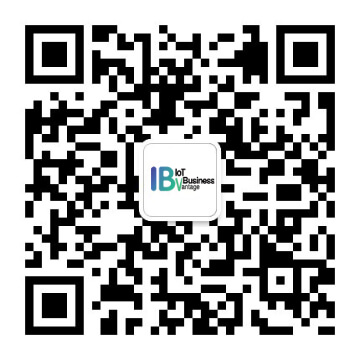设备配网 UI 业务包
更新时间:2025-11-13 06:28:12下载pdf
智能生活设备配网 UI 业务包的功能涵盖了目前常见的 Wi-Fi 设备、Zigbee 设备、蓝牙设备,并且支持二维码扫码的设备,例如 GPRS 和 NB-IoT 设备。业务包主要实现不同类型的设备配网前置操作引导,和具体入网激活。
功能概述
Wi-Fi 设备配网
支持 Wi-Fi 智能设备入网连接云服务,Wi-Fi 设备配网主要有快连模式和热点模式两种,其中智能摄像机(IPC)设备支持扫二维码方式配网。
| 名词 | 说明 |
|---|---|
| Wi-Fi 快连配网 | 又称快连模式。大致流程如下:
|
| Wi-Fi 热点配网 | 又称热点模式,手机作为 STA(STAtion)连接智能设备的热点,双方建立一个 Socket 连接,通过约定端口交互数据。 |
| IPC 扫码配网 | IPC 设备通过扫描 App 上的二维码,来获取配网数据信息。 |
Zigbee 设备配网
支持 Zigbee 网关和子设备配网:
| 名词 | 说明 |
|---|---|
| Zigbee 网关 | 融合 Zigbee 网络中协调器和 Wi-Fi 功能的设备,负责 Zigbee 网络的组建及数据信息存储。 |
| Zigbee 子设备 | Zigbee 网络中的路由或者终端设备,负责数据转发或者终端控制响应。 |
蓝牙设备配网
智能生活 App SDK 相关的蓝牙有以下几种技术方案:
| 名词 | 说明 |
|---|---|
| 蓝牙单点 | 蓝牙设备与手机一对一连接单点设备(蓝牙或低功耗蓝牙)。 |
| 蓝牙 Mesh | 蓝牙技术联盟发布的蓝牙拓扑通信,即低功耗蓝牙 Mesh。 |
| 涂鸦 Mesh | 涂鸦自研的蓝牙拓扑通信,使用场景与蓝牙 Mesh 产品相同。 |
| 双模设备 | 一些多协议设备也会使用到蓝牙技术,例如同时具备 Wi-Fi 能力和蓝牙能力的 双模设备。 |
扫码配网设备
扫码配网设备上电后即连接了涂鸦的云服务,App 通过扫描设备上的二维码让设备在云端激活绑定。这个二维码必须是涂鸦支持的二维码规则,具体接入方式可咨询您的涂鸦客户经理。
| 名词 | 说明 |
|---|---|
| GPRS 设备 | 采用 GPRS 通信技术接入网络连接云服务的智能设备。 |
| NB-IoT 设备 | 采用窄带物联网(NarrowBand-Internet of Things)技术的智能设备。 |
自动发现配网
融合涂鸦智能通用配网技术实现,为您提供一套快捷配网的功能。
接入组件
在工程的 Podfile 文件中添加配网业务包组件,并执行 pod update 命令:
source 'https://github.com/tuya/tuya-pod-specs.git'
source 'https://cdn.cocoapods.org/'
platform :ios, '11.0'
target 'your_target_name' do
# 添加配网业务包
pod 'ThingSmartActivatorBizBundle'
end
Wi-Fi 设备配网过程需要获取手机当前连接 Wi-Fi 名称,需要项目开启地位权限来获取 Wi-Fi 的名称,在 info.plist 中添加如下权限声明,创建 CLLocationManager 示例,并调用 requestWhenInUseAuthorization 方法。
NSLocationAlwaysAndWhenInUseUsageDescription
NSLocationAlwaysUsageDescription
NSLocationWhenInUseUsageDescription
二维码扫码功能需要系统相机权限,需要在 info.plist 中添加以下声明:
NSCameraUsageDescription
自定义配置
蓝牙配网功能
配网业务包支持 Wi-Fi、蓝牙等类型的设备配网,其中蓝牙配网为可选项。
-
如果当前 App 不需要蓝牙配网功能,只需要将自定义
thing_custom_config.json中的needBle属性设置为false即可。 -
如果当前 App 需要蓝牙配网功能,首先您需要在项目的
info.plist文件中添加蓝牙权限的声明,设置thing_custom_config.json中的needBle属性设置为true,然后需要在项目中添加以下依赖:系统权限
NSBluetoothAlwaysUsageDescription NSBluetoothPeripheralUsageDescription配置项
{ "config": { "appId": 123, "thingAppKey": "xxxxxxxxxxxx", "appScheme": "tuyaSmart", "hotspotPrefixs": ["SmartLife"], "needBle": true, "needQRCode": true }, "colors":{ "themeColor": "#FF5A28" } }依赖
低于 5.8.0 版本 pod 'ThingBLEHomeManager' pod 'ThingBLEInterfaceImpl' pod 'ThingBLEMeshInterfaceImpl' pod 'ThingSmartBLEKit' pod 'ThingSmartBLEMeshKit' 5.8.0 以上版本 pod 'ThingSmartBusinessExtensionKitBLEExtra'
热点名称设置
-
涂鸦设备热点前缀默认为
SmartLife。 -
若当前设备的热点前缀名称已修改,则需要在
thing_custom_config.json文件中设置hotspotPrefixs属性,设置为当前设备的热点前缀。{ "config": { "appId": 123, "thingAppKey": "xxxxxxxxxxxx", "appScheme": "tuyaSmart", "hotspotPrefixs": ["SL"], "needBle": true }, "colors":{ "themeColor": "#FF5A28" } }
自发现开关配置
如果需要控制自发现支持设备类型,需要在 thing_custom_config.json 文件中设置 activator_auto_serach_capacity 属性。
{
"config": {
"appId": 123,
"thingAppKey": "xxxxxxxxxxxx",
"appScheme": "tuyaSmart",
"hotspotPrefixs": ["SL"],
"needBle": true,
"activator_auto_serach_capacity": {
"searchTypeBle": true,
"searchTypeEZ": false,
"searchTypePegasus": true,
"searchTypeWired": true,
"searchTypeZigbee": true,
"searchTypeMatter": true
}
},
"colors":{
"themeColor": "#FF5A28"
}
}
Matter 设备配网
要让设备和 App 支持 Matter 配网,您需要:
-
添加 iOS 系统权限
matter.allow-setup-payload。 -
在
info.plist中添加 iOS Bonjour 服务相关配置。 -
通过设置
thing_custom_config.json中的is_matter_support属性设置为true,开启 Matter 设备配网功能,否则会保持默认的关闭状态。 -
在项目中添加 Matter Extension Target,主工程与 Matter Extension Target 需要设置在相同的 App Groups。
系统权限
com.apple.developer.matter.allow-setup-payloadinfo.plist 配置
<key>NSBonjourServices</key> <array> <string>_meshcop._udp</string> <string>_matterd._udp</string> <string>_matter._tcp</string> <string>_matterc._udp</string> </array>配置项
{ "config": { "appId": 123, "thingAppKey": "xxxxxxxxxxxx", "appScheme": "tuyaSmart", "hotspotPrefixs": ["SmartLife"], "needBle": true, "is_matter_support":true }, "colors":{ "themeColor": "#FF5A28" } }依赖
target 'your_target_name' do pod 'ThingSmartBusinessExtensionKitMatterExtra' end target 'MatterExtension' do pod 'ThingSmartMatterExtensionKit' endMatter Extension 实现如下
// // RequestHandler.swift // ThingMatterExtension // import MatterSupport import ThingSmartMatterExtensionKit // The extension is launched in response to MatterAddDeviceRequest.perform() and this class is the entry point // for the extension operations. class RequestHandler: MatterAddDeviceExtensionRequestHandler { override init() { super.init() ThingMatterExtensionSupport.shared.setMatterConfigKey(configKey: "your app group") } override func validateDeviceCredential(_ deviceCredential: MatterAddDeviceExtensionRequestHandler.DeviceCredential) async throws { ThingMatterExtensionSupport.shared.validateDeviceCredential(deviceCredential) } override func selectWi-FiNetwork(from wifiScanResults: [MatterAddDeviceExtensionRequestHandler.Wi-FiScanResult]) async throws -> MatterAddDeviceExtensionRequestHandler.Wi-FiNetworkAssociation { // Use this function to select a Wi-Fi network for the device if your ecosystem has special requirements. // Or, return .defaultSystemNetwork to use the iOS device's current network. // return .defaultSystemNetwork return ThingMatterExtensionSupport.shared.selectWi-FiNetwork(from: wifiScanResults) } override func selectThreadNetwork(from threadScanResults: [MatterAddDeviceExtensionRequestHandler.ThreadScanResult]) async throws -> MatterAddDeviceExtensionRequestHandler.ThreadNetworkAssociation { // Use this function to select a Thread network for the device if your ecosystem has special requirements. // Or, return .defaultSystemNetwork to use the default Thread network. return ThingMatterExtensionSupport.shared.selectThreadNetwork(from: threadScanResults) // return .defaultSystemNetwork } override func commissionDevice(in home: MatterAddDeviceRequest.Home?, onboardingPayload: String, commissioningID: UUID) async throws { // Use this function to commission the device with your Matter stack. ThingMatterExtensionSupport.shared.commissionDevice(in: home, onboardingPayload: onboardingPayload, commissioningID: commissioningID) } override func rooms(in home: MatterAddDeviceRequest.Home?) async -> [MatterAddDeviceRequest.Room] { // Use this function to return the rooms your ecosystem manages. // If your ecosystem manages multiple homes, ensure you are returning rooms that belong to the provided home. return [MatterAddDeviceRequest.Room(displayName: "room")] } override func configureDevice(named name: String, in room: MatterAddDeviceRequest.Room?) async { // Use this function to configure the (now) commissioned device with the given name and room. ThingMatterExtensionSupport.shared.configureDevice(named: name, in: room) } }
服务协议
提供服务
配网业务包实现 ThingActivatorProtocol 协议以提供服务,在 ThingModuleServices 组件中查看 ThingActivatorProtocol.h,协议文件内容为:
#ifndef ThingActivatorProtocol_h
#define ThingActivatorProtocol_h
typedef NS_ENUM(NSUInteger, ThingActivatorCompletionNode) {
ThingActivatorCompletionNodeNormal
};
@class ThingSmartHome;
@protocol ThingActivatorProtocol <NSObject>
/**
* Start config
* Goto device config list view
*/
- (void)gotoCategoryViewController;
/**
* Obtain device information after each device connection
* @param node completion node, default ThingActivatorCompletionNodeNormal
* @param custionJump default false, set true for process not need to jump to de device panel
*/
- (void)activatorCompletion:(ThingActivatorCompletionNode)node customJump:(BOOL)customJump completionBlock:(void (^)(NSArray * _Nullable deviceList))callback;
/**
* Open qrcode view
* @param userInfo reserved parameter
*/
- (void)gotoQRCodeViewControllerWithUserInfo:(nullable NSDictionary *)userInfo;
@end
#endif /* ThingActivatorProtocol_h */
若您需要自定义配网品类或产品列表返回,则需要实现 ThingActivatorExternalExtensionProtocol 提供的协议方法。
ThingActivatorExternalExtensionProtocol
/**
* Back action form category View Controller
* Need to implement when additional operations are needed
*/
- (BOOL)categoryViewControllerCustomBackAction;
依赖服务
配网业务包正常运行需要依赖 ThingSmartHomeDataProtocol 这个协议提供的方法,以提供配网所需当前家庭信息。调用业务包之前需要实现该依赖协议。
/**
获取当前的家庭,当前没有家庭的时候,返回 nil。
@return ThingSmartHome
*/
- (ThingSmartHome *)getCurrentHome;
使用指南
注意事项
-
任何接口调用之前,务必确认用户已登录。
-
调用配网业务包逻辑前,要先实现
ThingSmartHomeDataProtocol中的协议方法getCurrentHome。Objective-C 示例
#import <ThingSmartBizCore/ThingSmartBizCore.h> #import <ThingModuleServices/ThingSmartHomeDataProtocol.h> - (void)initCurrentHome { // 注册要实现的协议 [[ThingSmartBizCore sharedInstance] registerService:@protocol(ThingSmartHomeDataProtocol) withInstance:self]; } // 实现对应的协议方法 - (ThingSmartHome *)getCurrentHome { ThingSmartHome *home = [ThingSmartHome homeWithHomeId:@"当前家庭 id"]; return home; }Swift 示例
import ThingSmartDeviceKit class ThingActivatorTest: NSObject,ThingSmartHomeDataProtocol{ func test() { ThingSmartBizCore.sharedInstance().registerService(ThingSmartHomeDataProtocol.self, withInstance: self) } func getCurrentHome() -> ThingSmartHome! { let home = ThingSmartHome.init(homeId: 111) return home } }
进入配网
Objective-C 示例
#import <ThingSmartBizCore/ThingSmartBizCore.h>
#import <ThingModuleServices/ThingActivatorProtocol.h>
- (void)gotoDeviceConfig {
id<ThingActivatorProtocol> impl = [[ThingSmartBizCore sharedInstance] serviceOfProtocol:@protocol(ThingActivatorProtocol)];
[impl gotoCategoryViewController];
// 获取配网结果
[impl activatorCompletion:ThingActivatorCompletionNodeNormal customJump:NO completionBlock:^(NSArray * _Nullable deviceList) {
NSLog(@"deviceList: %@",deviceList);
}];
}
Swift 示例
let impl = ThingSmartBizCore.sharedInstance().service(of: ThingActivatorProtocol.self) as? ThingActivatorProtocol
impl?.gotoCategoryViewController()
impl?.activatorCompletion(ThingActivatorCompletionNode.normal, customJump: false, completionBlock: { (devIdList:[Any]?) in
print(devIdList ?? [])
})
返回自定义配网品类
Objective-C 示例
#import <ThingSmartBizCore/ThingSmartBizCore.h>
#import <ThingModuleServices/ThingActivatorExternalExtensionProtocol.h>
- (void)initCurrentHome {
// 注册要实现的协议
[[ThingSmartBizCore sharedInstance] registerService:@protocol(ThingActivatorExternalExtensionProtocol) withInstance:self];
}
// 实现对应的协议方法
- (BOOL)categoryViewControllerCustomBackAction {
[self.navigationController popToRootViewControllerAnimated:YES];
return YES;
}
Swift 示例
class ThingActivatorTest: NSObject,ThingActivatorExternalExtensionProtocol{
func test() {
ThingSmartBizCore.sharedInstance().registerService(ThingActivatorExternalExtensionProtocol.self, withInstance: self)
}
func categoryViewControllerCustomBackAction() -> Bool {
self.navigationController?.popToRootViewController(animated: true)
return true;
}
}
扫码功能
Objective-C 示例
#import <ThingSmartBizCore/ThingSmartBizCore.h>
#import <ThingModuleServices/ThingActivatorProtocol.h>
- (void)gotoQRCodeViewController {
// 注册要实现的协议
id<ThingActivatorProtocol> impl = [[ThingSmartBizCore sharedInstance] serviceOfProtocol:@protocol(ThingActivatorProtocol)];
if ([impl respondsToSelector:@selector(gotoQRCodeViewControllerWithUserInfo:)]) {
[impl gotoQRCodeViewControllerWithUserInfo:nil];
}
}
Swift 示例
if let impl = ThingSmartBizCore.sharedInstance.service(of: ThingActivatorProtocol.self),
impl.responds(to: #selector(impl.gotoQRCodeViewController(withUserInfo:))) {
impl.gotoQRCodeViewController(withUserInfo: nil)
}
该内容对您有帮助吗?
是意见反馈该内容对您有帮助吗?
是意见反馈






